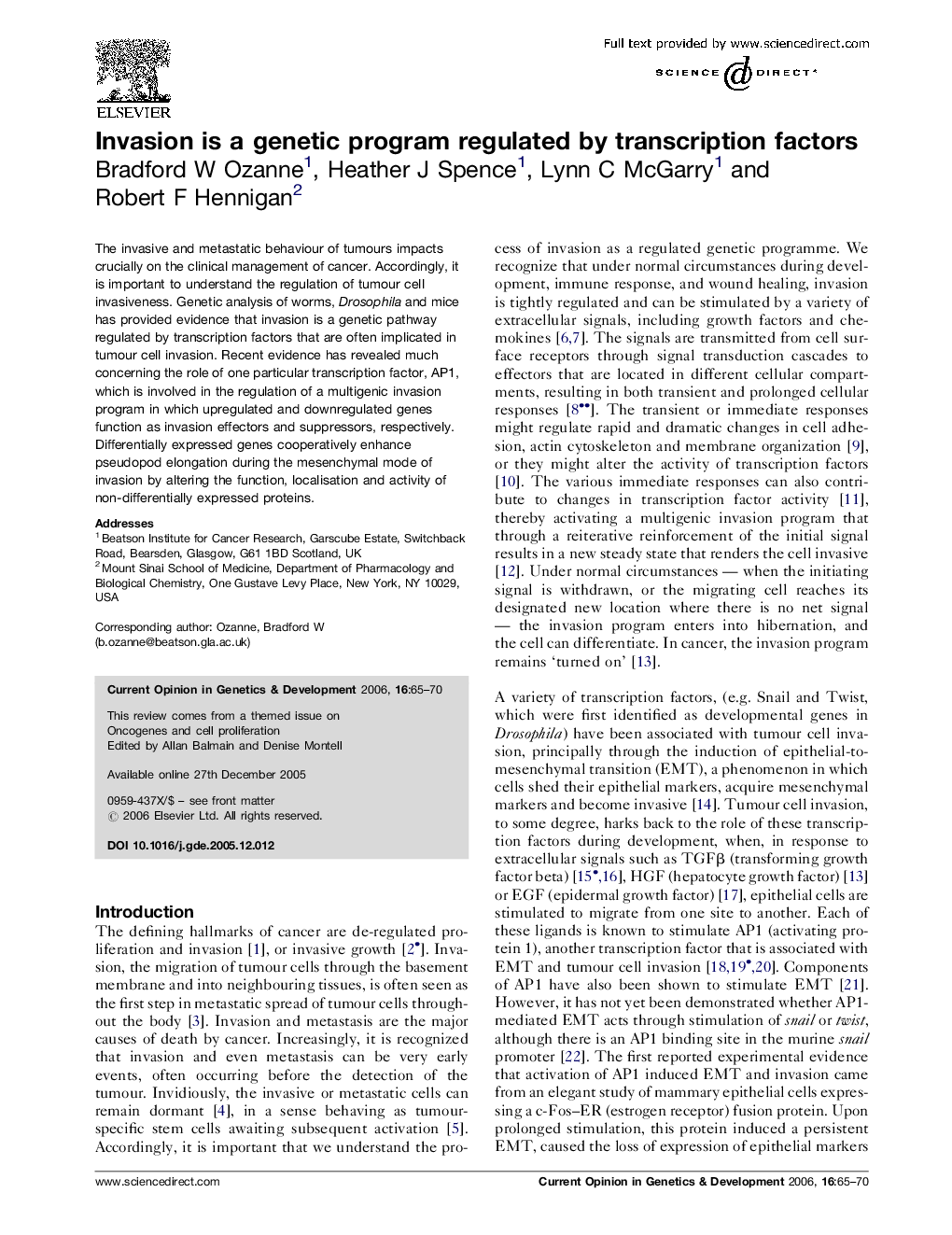| کد مقاله | کد نشریه | سال انتشار | مقاله انگلیسی | نسخه تمام متن |
|---|---|---|---|---|
| 2785502 | 1153958 | 2006 | 6 صفحه PDF | دانلود رایگان |

The invasive and metastatic behaviour of tumours impacts crucially on the clinical management of cancer. Accordingly, it is important to understand the regulation of tumour cell invasiveness. Genetic analysis of worms, Drosophila and mice has provided evidence that invasion is a genetic pathway regulated by transcription factors that are often implicated in tumour cell invasion. Recent evidence has revealed much concerning the role of one particular transcription factor, AP1, which is involved in the regulation of a multigenic invasion program in which upregulated and downregulated genes function as invasion effectors and suppressors, respectively. Differentially expressed genes cooperatively enhance pseudopod elongation during the mesenchymal mode of invasion by altering the function, localisation and activity of non-differentially expressed proteins.
Journal: Current Opinion in Genetics & Development - Volume 16, Issue 1, February 2006, Pages 65–70